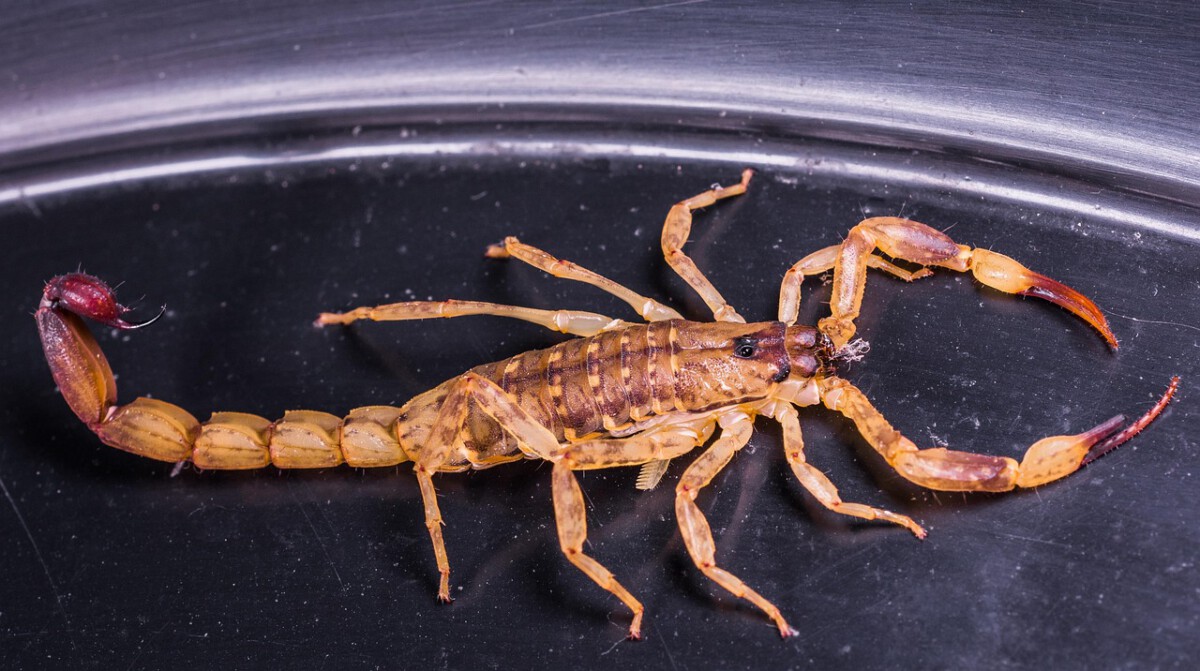The Daredevil President Meets Aviation’s Golden Boy

Picture this: it’s October 11, 1910, and Theodore Roosevelt has just finished campaigning for Republican candidates in Missouri when he spots something that would change his day forever. On this day in 1910, Theodore Roosevelt becomes the first United States President to fly in an airplane with aviator Arch Hoxsey, who later described the trip as “the bulliest experience I ever had.” Roosevelt wasn’t even supposed to be there for aviation—he was helping the Missouri State Republican Party with their campaign. But when you’re Teddy Roosevelt, the man who led the Rough Riders and hunted big game in Africa, a flying machine sitting right there in front of you becomes absolutely irresistible. Roosevelt later told the New York Times, “You know, I didn’t intend to do it. But when I saw the thing there, I could not resist it.” The former president immediately walked over to the plane and climbed aboard, making history in the process. The plane was in the air before the crowd realized what had happened and who Hoxsey’s passenger was.
When Aviation Was Still a Death-Defying Spectacle

Back in 1910, flying wasn’t the routine activity we know today—it was considered wildly dangerous entertainment. Presidents board airplanes on a routine basis these days, but back then, the move was viewed as inherently risky. One 1910 newspaper blared, “Col. Roosevelt defied death late yesterday when he went up in an aeroplane with Aviator Arch Hoxsey.” The Wright Brothers had only achieved their first successful flight at Kitty Hawk just seven years earlier in 1903, making aviation still feel like science fiction to most people. According to Tom Crouch, author of the Wright brothers biography The Bishop’s Boys, “All you have to do is look at some of the newspaper reports to see just how stunning the exhibition flights really were. People were fainting. People were absolutely dumbfounded to see this thing in the air.” Flying was so new and shocking that crowds would gather by the thousands just to witness someone take to the skies. Safety measures in early aircraft were limited due to existing technology, leading to accidents that could have been prevented.
The Wright Brothers Launch the Age of Flight

The Wright brothers made the first controlled, sustained flight of an engine-powered, heavier-than-air aircraft with the Wright Flyer on December 17, 1903, four miles south of Kitty Hawk, North Carolina, at what is now known as Kill Devil Hills. After building and testing three full-sized gliders, the Wrights’ first powered airplane flew at Kitty Hawk on December 17, 1903, making a 12-second flight, traveling 36 m (120 ft), with Orville piloting. The best flight of the day, with Wilbur at the controls, covered 255.6 m (852 ft) in 59 seconds. This wasn’t just lucky guessing—the Wright Brothers were serious engineers who spent years perfecting their design. The Wright Flyer was the product of a sophisticated four-year program of research and development conducted by Wilbur and Orville Wright beginning in 1899. The Wrights pioneered many of the basic tenets and techniques of modern aeronautical engineering, such as the use of a wind tunnel and flight testing as design tools. Their breakthrough wasn’t just about getting airborne—it was about creating a machine that could actually be controlled in flight. The brothers’ breakthrough invention was their creation of a three-axis control system, which enabled the pilot to steer the aircraft effectively and to maintain its equilibrium.
Meet Arch Hoxsey: Aviation’s Rising Star

Archibald Hoxsey was the perfect pilot for Roosevelt’s historic flight—young, skilled, and fearless. The 26-year-old aviator had pursued a flying career since he was 18, when he went to work as a mechanic for the Wright brothers. In 1910 he became a Wright team pilot. Aviation historian Arch Whitehouse referred to him as “one of the most personable airmen of his time—the dandy of the barnstorming circuits.” Hoxsey wasn’t just another pilot trying to make a name for himself—he was already breaking records and winning prize money. The early bird pilot had broken the world altitude record by soaring to 11,474 feet on December 26 and won more than $6,000 in prize money at an international air meet in Los Angeles. What made him special was his combination of technical skill and showmanship, exactly the kind of person who could convince a former president to take his first airplane ride. In an impromptu meeting between Hoxsey and Roosevelt, the aviator said, “Colonel, I’d like to have you go up with me.” He mentioned to TR that they celebrated the same birthday, October 27. “After I told him that he smiled,” Hoxsey said. “As soon as I saw his smile, I knew I had him.”
The Historic Four-Minute Flight That Made Headlines

Roosevelt’s flight lasted just four minutes, but those four minutes changed aviation history forever. Piloted by Arch Hoxsey, Roosevelt would stay aloft for 4 minutes in a Wright brothers-built plane at Kinloch Field in St. Louis, Mo. The two men took off and circled the airfield twice in “three minutes and twenty seconds.” An enthusiastic Roosevelt waved at the crowds on the ground below, “most of whom were too dumbfounded and frightened to move,” remarked one reporter. The former president was having such a good time that he couldn’t help himself from leaning out and waving enthusiastically at the spectators below. In fact, the former president was gesturing so hard that Hoxsey barked at him, “Keep your hands on the rail, colonel!” More than 10,000 persons breathlessly watched the flight, fearing the colonel’s daring on the spur of the moment might mean his death or injury. After two laps around the aviation field, Hoxsey brought the machine gracefully to ground, having flown nearly three miles in three minutes and twenty seconds. When they landed safely, Roosevelt was practically giddy with excitement.
Roosevelt’s Fearless Reputation Preceded Him

By 1910, Americans were already used to Theodore Roosevelt taking incredible risks and having amazing adventures. By then, Roosevelt was an ex-President who’d spent his first months out of office on a safari in Africa and a tour of Europe. This was the same man who had charged up San Juan Hill with the Rough Riders during the Spanish-American War and who regularly boxed and practiced judo in the White House. At 42 years old, Teddy Roosevelt remains the youngest person to become President of the United States. His motto “speak softly and carry a big stick” wasn’t just political philosophy—it reflected his personal approach to life. Roosevelt stayed on the ground during his presidency. He approved the assignment of Lieutenant Thomas Selfridge to participate in early aeronautical experiments with Alexander Graham Bell and Glenn Curtiss. During Roosevelt’s presidency, Selfridge became the first person and first military pilot to die in an airplane crash. So Roosevelt knew exactly how dangerous flying could be, which made his decision to climb into Hoxsey’s plane even more remarkable.
The Wright Model B: A Flying Machine of Wire and Wood

The airplane that carried Roosevelt into the history books was a Wright Model B, a far cry from modern aircraft. The Wright Model B was a two-place, single-engine biplane. The elevator was at the rear, rather than in canard position as had been the earlier Wright airplanes. Roll control was through the Wright Brother’s patented wing-warping system. It was 26 feet (7.925 meters) long with a wingspan of 39 feet (11.887 meters). It weighed 800 pounds (363 kilograms) empty and had a gross weight of 1,250 pounds (567 kilograms). Think of it as a motorized kite made of wood, wire, and fabric rather than a real airplane. It used a 12 horsepower (9 kilowatts) gasoline engine powering two pusher propellers. Employing “wing warping”, it was relatively unstable and very difficult to fly. The plane had no seat belts, no windshield, and certainly no safety features we’d recognize today. The Wright Flyer’s “runway” was a 60-foot (18 m) track of 2x4s, which the brothers nicknamed the “Junction Railroad”. The Wright Flyer skids rested on a launching dolly, consisting of a 6-foot (1.8 m) plank, with a wheeled wooden section.
Aviation’s Deadly Learning Curve in 1910

Races between aeroplanes and cars are won only by racing cars in 1910. Aviation was so dangerous in 1910 that it regularly claimed the lives of even the most skilled pilots. The first accident involving a powered aircraft occurred on September 17, 1908, when a Wright Model A crashed at Fort Myer, Virginia, USA. The pilot and co-inventor, Orville Wright, was injured, and the passenger, Signal Corps Lieutenant Thomas Selfridge, was killed. The first mid-air collision took place near Milan on October 3. Both pilots, Bertram Dickson and René Thomas, survive, but Dickson is badly injured. The year 1910 saw numerous aviation firsts, but also numerous aviation deaths. American pioneers John B. Moisant and Arch Hoxsey are killed on December 31 within hours of each other. Moisant at New Orleans in the morning and Hoxsey at Los Angeles in the afternoon. Flying was so risky that pilots were considered daredevils rather than transportation professionals. While many aviation pioneers appeared to leave safety largely to chance, the Wrights’ design was greatly influenced by the need to teach themselves to fly without unreasonable risk to life and limb, by surviving crashes.
How the Flight Almost Didn’t Happen

Roosevelt’s historic flight happened purely by chance—he wasn’t planning to fly that day. Now he was back in the States, but his flight doesn’t appear to have been pre-planned. Instead, he was in Missouri, helping that state’s Republican Party. In the meantime, the Wright Brothers were hosting an air show in St. Louis. While participating in the Missouri State Republican Party’s campaign on October 11, 1910, TR is invited to fly in a biplane with Arch Hoxsey as pilot. Several accounts exist of what happened. According to Hoxsey, he was introduced to Roosevelt, who pronounced himself envious of the pilot. “Here’s your chance,” Hoxsey responded. Roosevelt agreed to a quick flight, but he also told Hoxsey, “Let’s not make too much fuss about it.” The casual nature of the invitation makes it even more amazing—this wasn’t a carefully planned presidential photo opportunity, but a spontaneous decision by two men who shared a love of adventure. Roosevelt said, “All right, but let’s not make too much fuss about it.” Roosevelt was on the machine before I was.
The Crowd’s Terrified Reaction

The thousands of spectators at Kinloch Field weren’t expecting to see their former president risk his life in a flying machine. The spectators seemed frightened and remained silent,” the Times reported, “watching the aeroplane intently.” But Roosevelt was having fun. It may or may not have been safe, but he was leaning out of the plane as it passed the grandstand, cheerfully waving at the crowds below. The crowd’s reaction tells us everything about how people viewed aviation in 1910—it was considered so dangerous that watching a former president fly made people hold their breath in terror. Hoxsey said later the colonel made a model passenger, except that he took too many chances. As the airship flew by the grandstand at a 60-mile clip, Roosevelt leaned over, waving his hand at the crowd. We were up about 150 feet. “Be careful not to pull any of those strings,” I warned him. He was sitting directly underneath the valve cord of the engine and the engine would have stopped had he touched it. Imagine being in a crowd where the main concern isn’t whether the flight will be smooth, but whether you’re about to witness a former president die in a crash.
Roosevelt’s Infectious Enthusiasm for Adventure

After landing safely, Roosevelt couldn’t contain his excitement about the experience. Roosevelt exclaimed, “It was fine. Fine!” as he crawled from the narrow seat through the network of wires. Roosevelt personally thanked the aviator, saying: “That was the bulliest experience I ever had. I envy you your professional conquest of space.” Hurrying to his next event in Clayton, the former president mentioned his recent flight to the audience, telling them he traveled in an “airship” and that he would forever remember his time in St. Louis as the “only place that ever put me up in the air.” Roosevelt even sent his personal compliments to the Wright brothers, showing his appreciation for their revolutionary invention. The colonel sent his personal compliments to the Wright brothers. His reaction wasn’t just polite gratitude—it was genuine amazement at experiencing something that felt like magic. This was a man who had traveled the world, hunted dangerous animals, and commanded troops in battle, yet a four-minute airplane ride left him speechless with wonder.
The Tragic End of Arch Hoxsey

When Hoxsey took off in his Wright biplane on December 31, 1910, it would be his last flight. He was up an hour and a half soaring over California’s 5,710-foot snowcapped Mt. Wilson. He had descended in spirals to within 800 feet of the landing strip when he seemed to drop out of the sky. Just two and a half months after his historic flight with Roosevelt, Hoxsey was dead. Arch Hoxsey was killed at Carson, California, 31 December 1910, when his airplane crashed while he was trying to better his own altitude record of 11,474 feet (3,497.3 meters), set the previous day. “A sigh or gasp, not loud, but of tremendous volume, arose from the grandstand,” The Cairo Bulletin reported. Fellow Wright teammate Walter Brookins “uttered but one word, ‘God!’…and he fell into the roadway.” Roosevelt was deeply affected by the news of his friend’s death. Roosevelt, paying tribute to his friend, said, “I am more grieved than I can say over the tragedy….Hoxsey was a man unafraid….Such men as he are the ones who accomplish things in the sphere of science and of all activity.” The tragedy highlighted just how dangerous those early days of aviation really were.
Aviation Transforms from Novelty to Necessity

Roosevelt’s 1910 flight came at the perfect moment in aviation history—when flying was still miraculous but starting to show real potential. By 1911, the Wright Company was building one plane per week, but could take more than four months to fulfill each order. While the Wright Company did not ship overseas, Europe’s aviation industry quickly grew thanks to the oncoming





